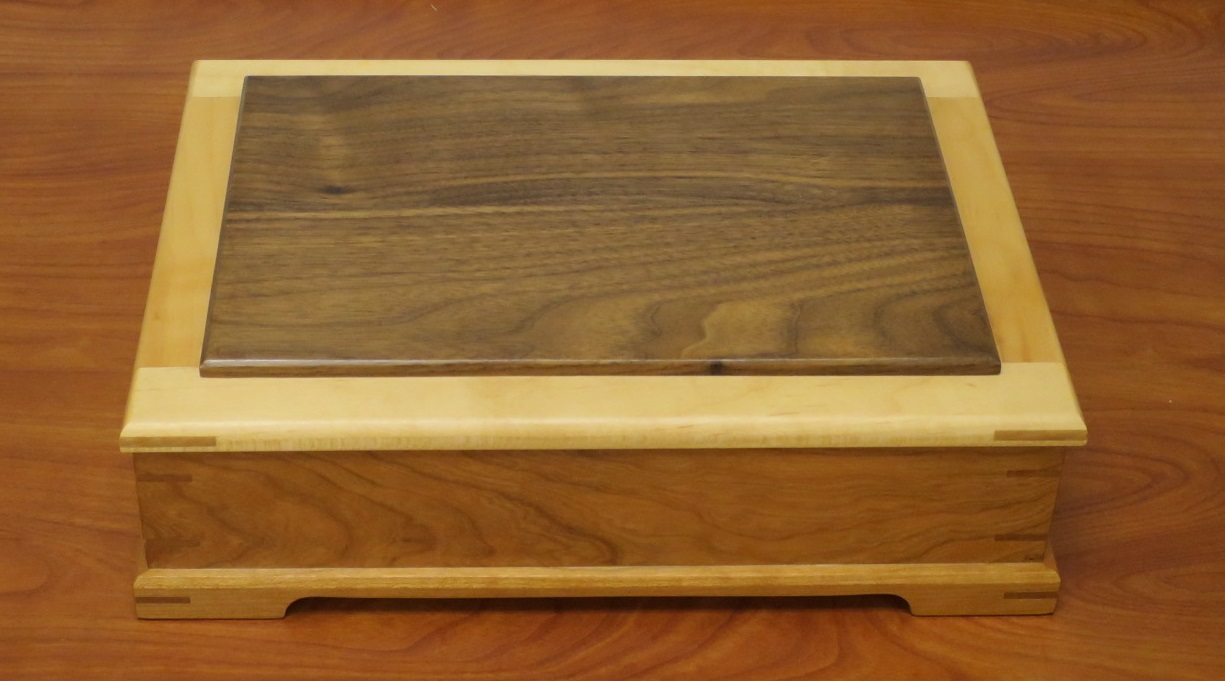Newsletter November 2019
Presidents Message
Fellow woodworkers
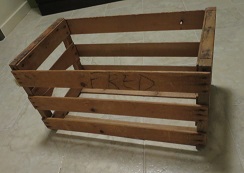
The story, so far, of the mystery box
A few weeks ago my wife and I were walking along a street going to dinner in one of our local brewery restaurants.
The street is in the process of a major reconfiguration (cycle paths and more) so there were holes everywhere with walls of orange barriers to guide you through the worksite. You could look down into the holes studying the old pipes trying guess what they used for: Gas pipes have key type taps on them, electric and communication cables are in plastic tubes, and the water pipes have metal tensioning rods between their connecting flanges (presumably something to do with earthquake protection).
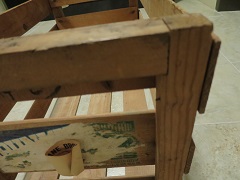
As we walked through this path enjoying the interesting sights my wife noticed an old wooden box. Later, while we were eating dinner, she said that it looked like an interesting box so on the way back home after dark we stopped for a closer look. It was an old fruit or vegetable box. We decide to take it home to study it in a brighter light. Carrying it down the street we felt the same as you feel after a successful dumpster diving trip. At home we saw that the corner frame members on the box were about 1 in. square good looking Douglas Fir and the 1/4in thick wooden side pieces were also a good quality wood. The end pieces were different to what I have seen before. The frame pieces were notched together which gave more strength to the box.
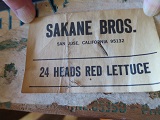
The box had a small white label stapled to it that said "SAKANE BROS. 24 HEADS RED LETTICE"
Under we could see a whitish label, then the stenciling on the side of the box.
The bit of the stenciling we could read had a Zip code: 85350 which belongs to the small farming town of Somerton, Arizona.
As Zip codes only came into us in the mid 70s the box is probably from that time which is quite a long time for a basic farm box to be around.
A few of the letters on the original label are still visible but we have not been able to trace that farm yet, it probably disappeared or merged into a larger
conglomerate many years ago - but we may find it.
On Ebay these basic boxes are offered for $50 - $100, which is much higher than I could get for making such a box.
Enjoy your woodwork
Frank
(Contact at:
Frankramsay8@aol.com)
Top
Last Meeting
President Frank Ramsay opened the meeting at 6:15 PM.
Guests:
Judy and John Kirk
Upcoming Meetings:
November 17th: BAWA Board meeting starting at 5.00 pm.
The agenda will be published shortly. Any member is entitled to attend.
November 17th: Short Annual Members meeting starting at 6.00 pm in the Bow Room
Member's Annual Meeting Agenda
Financial report: John Blackmore
Election of officers for 2019
November 17th: Regular meeting starting after Annual Members Meeting. Our guest speaker will be Michael Wallace talking about Greene and Greene furniture.
December 8th: The meeting will be our annual Christmas party.
Plus our first ever Christmas Ornament Challenge which is being organized by Aaron Blohowiak
Announcements:
Claude Godcharles announced that he has a book for sale.

Bruce Powell introduced Judy and John Kirk who had donated the Walnut that was being raffled to
benefit BAWA. The tree died in their yard and was felled by Robert Beauchamp 10 years ago and sawed into lumber. The Kirks agreed that if Bruce made them 4 tables out of
this lumber, they would donate $600 of the lumber to BAWA.
Top
The agenda will be published shortly. Any member is entitled to attend.
Member's Annual Meeting Agenda
Financial report: John Blackmore
Election of officers for 2019
November 17th: Regular meeting starting after Annual Members Meeting. Our guest speaker will be Michael Wallace talking about Greene and Greene furniture.
December 8th: The meeting will be our annual Christmas party.
Plus our first ever Christmas Ornament Challenge which is being organized by Aaron Blohowiak
Announcements:
Claude Godcharles announced that he has a book for sale.

Bruce Powell introduced Judy and John Kirk who had donated the Walnut that was being raffled to
benefit BAWA. The tree died in their yard and was felled by Robert Beauchamp 10 years ago and sawed into lumber. The Kirks agreed that if Bruce made them 4 tables out of
this lumber, they would donate $600 of the lumber to BAWA.
Top
Financial report: John Blackmore Election of officers for 2019
Plus our first ever Christmas Ornament Challenge which is being organized by Aaron Blohowiak
Claude Godcharles announced that he has a book for sale.

Bruce Powell introduced Judy and John Kirk who had donated the Walnut that was being raffled to
benefit BAWA. The tree died in their yard and was felled by Robert Beauchamp 10 years ago and sawed into lumber. The Kirks agreed that if Bruce made them 4 tables out of
this lumber, they would donate $600 of the lumber to BAWA.
Top
Top
Featured Speaker: Robert Beauchamp
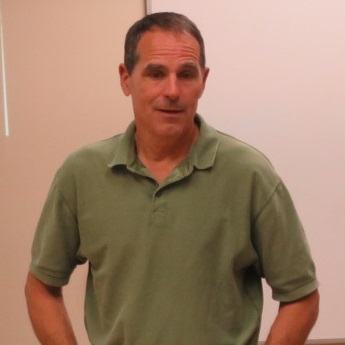
Bruce introduce the speaker, Robert Beauchamp, sawyer, tree feller, cone collector, and master woodworker.
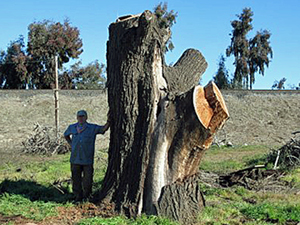
He also sells walnut lumber out of his shop.
Robert described the project he did for Christine Lorelei in which he was asked to design and build a dining set consisting of a table and 8 chairs. He was able to get all the lumber from a single log. He first did some drawings and discussed them with the client. He then made a chair prototype in redwood. He made the seat first. He cut the shape with a router and template using 2" thick material. He glued the legs using Gorilla glue because it allows adjustment of the joint even after first contact whereas typical wood glues seize up quickly. The leg joint was strengthened by inserting a wedged dowel and given extra glue area via blocks added under the seat. He sculpted the seat shape roughly with a chain saw and then ground it smooth with a 40-grit pad on an angle grinder. He then used a mini grinder, a Makita 1-1/8 wide belt sander to smooth and form to final shape. The entire sculpting process took 2 people about 8 hours.
He routed all edges of the legs with a Queen Anne bit (crescent shape). The back support is a compound curve and meets the headboard at a flat spot. Final smoothing was done with a spokeshave or hand plane. Each part got 8 coats of tung oil and buffing with #000 steel wool as needed. Straight tung oil is used except for the first coat where the tung oil is diluted 2:1.

The back slats were formed of 3 pieces of walnut laminated in a veneer press. The top and bottom pieces of the back slats were attached with mortise/tenon joinery to the seat and headboard. Finally, the chairs were waxed with Howard's Bees wax.
He has about 30,000 board feet of walnut lumber in his shop which is for sale.
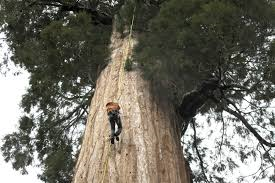
By way of closing Robert mentioned that this past week he had climbed a 260-foot-tall Sequoia. This was to collect cones for the Forest Service and lumber companies that will stored in a seed bank for future use when needed. To collect the cones the trees must be climbed as only on the upper branches are the cones close enough to the trunk to collect.
Robert's websites are:
thewalnutplace.com
robertbeauchamp.com
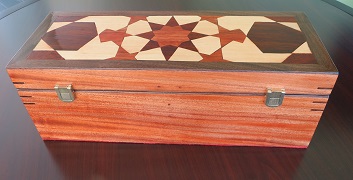
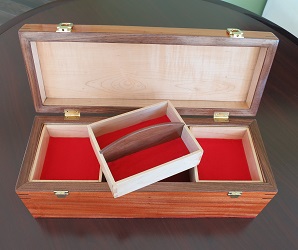
Frank showed a re-purposed wine display box which he converted into a treasure box. He had to fill in the grooves in the sides which had contained the bottle supports. He did some parquetry in the lids using Euclidean geometry based on the Alhambra.

Aaron Blohowiak showed a Kumiko Zaiku Japanese design box he did in a class he took with Mike Pekovic.
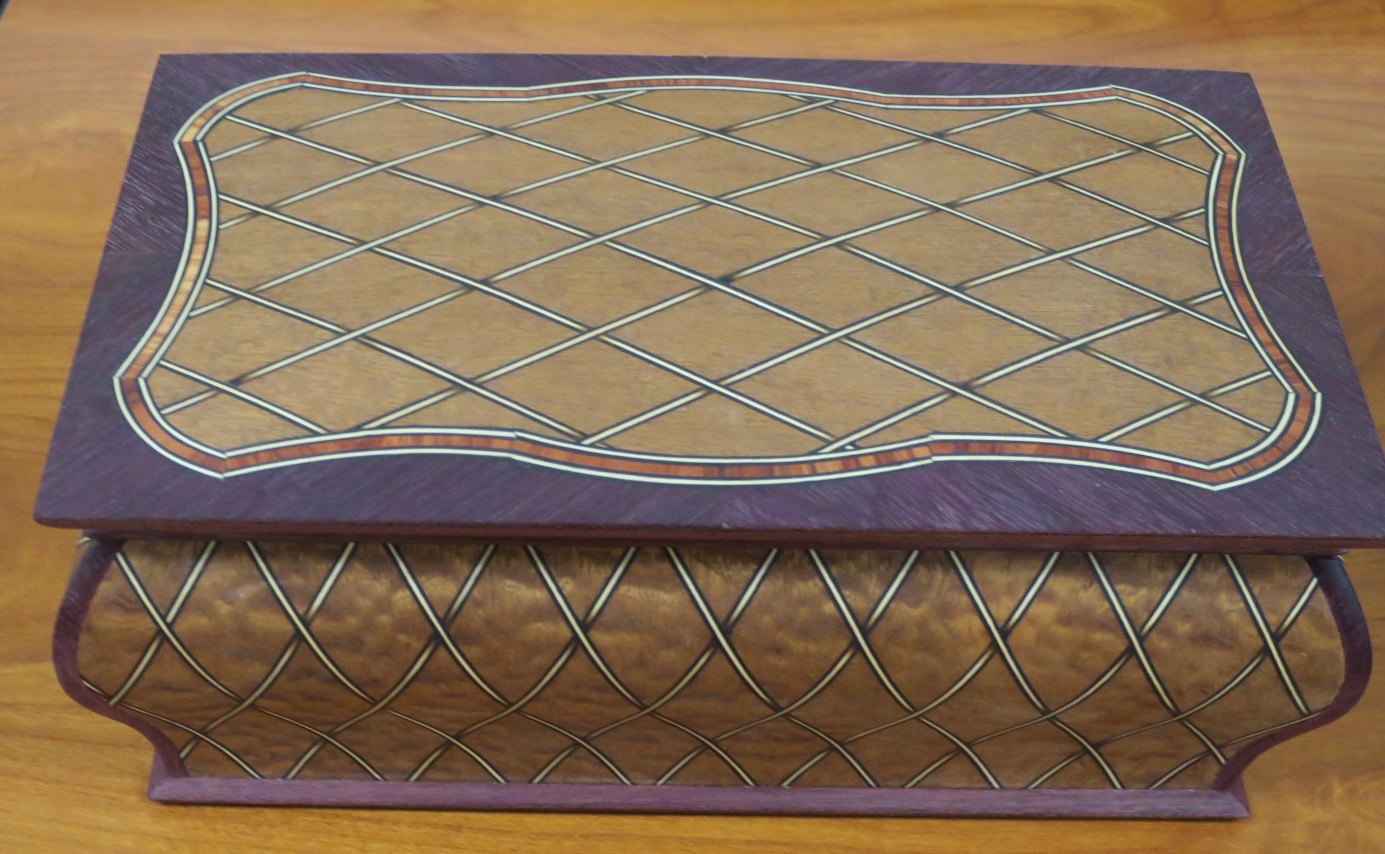

Claude showed a box he made in a class with Paul Schurch. It is put together with hide glue, including the parquetry, which is based on a Louis XV pattern. It is Pear wood inside.
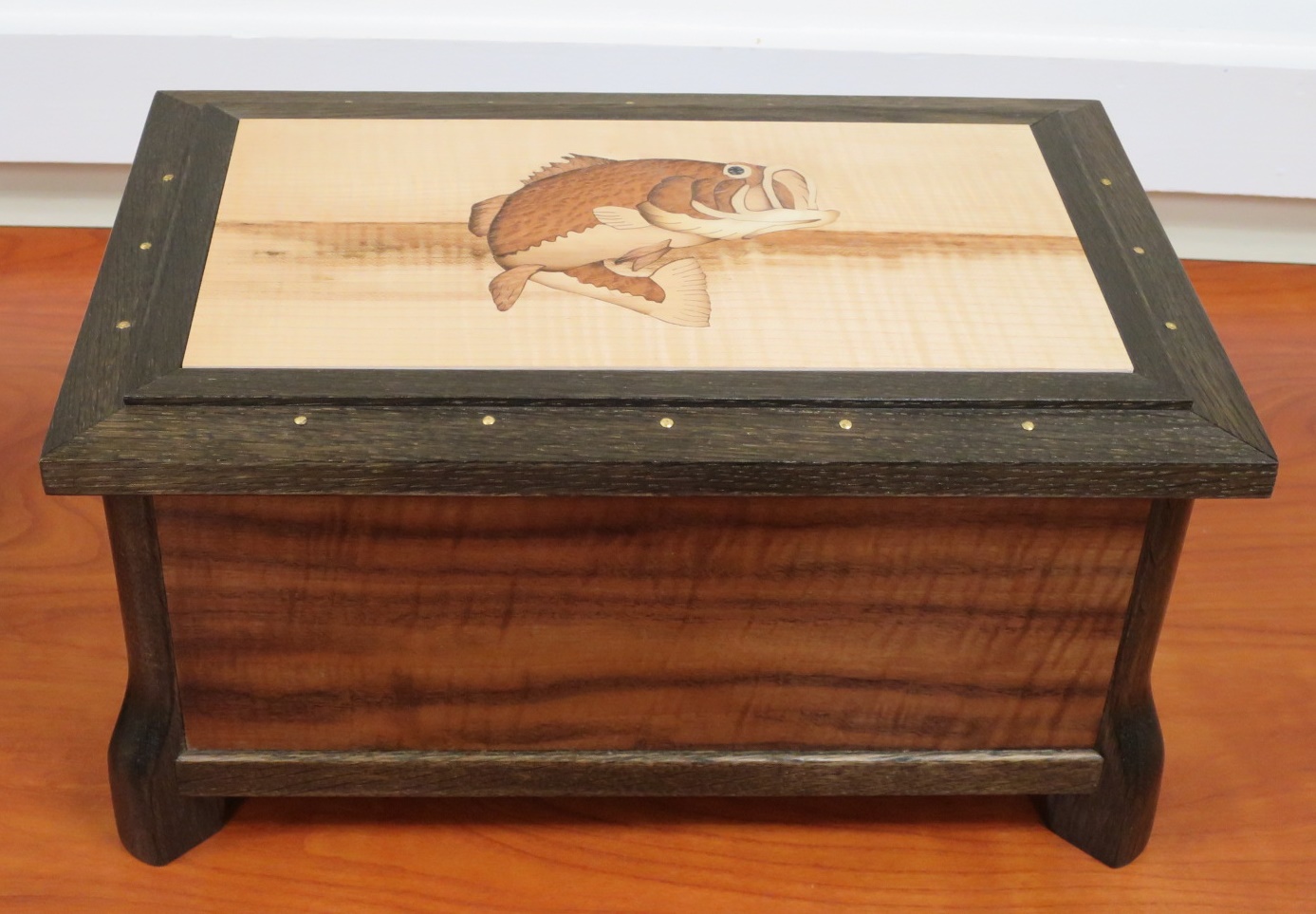
Tom Gaston showed a cremains box he made for his father in law which had a marquetry fish on the lid. The lid is made of White Oak stained dark with iron/vinegar solution. The box is Claro Walnut.
